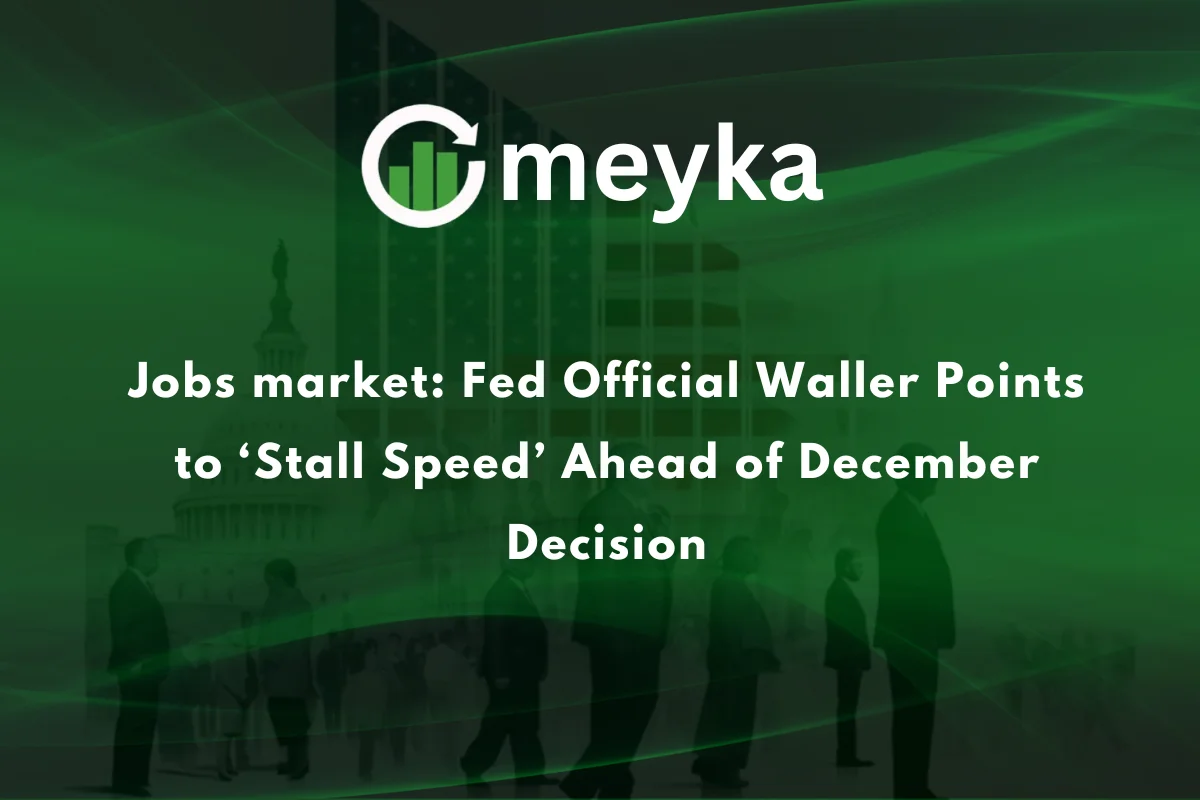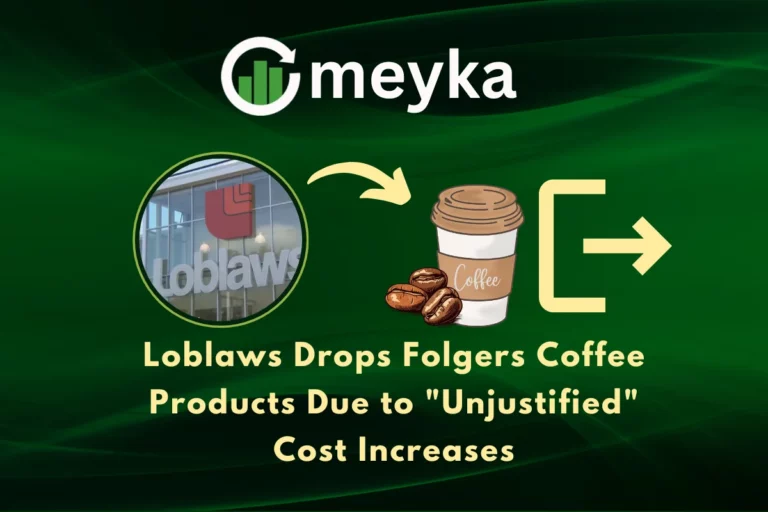Jobs market: Fed Official Waller Points to ‘Stall Speed’ Ahead of December Decision
Federal Reserve Governor Christopher Waller recently raised a serious red flag about the jobs market, suggesting it could be hovering at “stall speed” and motivating him to push for another interest rate cut at the Fed’s December meeting. His remarks reflect growing concern that labor-market momentum is fading, a trend that could have wide implications for the U.S. economy, inflation, and financial markets.
What Does “Stall Speed” Mean in the Jobs Market?
When Waller describes the U.S. labor market as being at “stall speed,” he means that job creation is slowing significantly; hiring is weak, layoffs are inching up, and there is no strong upward pressure on wages. According to him, state unemployment claims are rising, layoff numbers are increasing, and wage growth remains muted.
This is not just a blip, Waller argues that after several months of weakening, the labor market risks slipping into a more sustained slowdown. For him, these signals justify a preemptive move: a quarter-point interest rate cut when the Fed meets on December 9–10.
Why Waller Thinks a Rate Cut Is Needed
Waller sees this rate cut as a prudent risk management strategy: lowering rates now could help support a fracturing jobs market before conditions worsen. He believes letting the labor market deteriorate further without a policy response would be reckless.
Despite a recent government shutdown that delayed key economic data, including September’s jobs report, Waller says the Fed has enough private-sector data to act. He points to metrics from payroll firms like ADP, unemployment claims, and business surveys from sources like the Conference Board and the University of Michigan.
Importantly, Waller is not overly concerned about inflation running hot in response to the rate cut. He argues that once the temporary effects of trade tariffs are removed, inflation looks relatively close to the Fed’s 2% target. This gives him more confidence that a modest cut would not reignite price pressures.
He also emphasizes that the current monetary policy setting is somewhat restrictive, especially for middle- and lower-income households, who may be feeling more financial stress. A rate cut in December would, in his view, provide a cushion against further economic weakening.
A Divided Fed
Not everyone at the Fed shares Waller’s urgency. Other officials, like Vice Chair Philip Jefferson, have cautioned against moving too quickly. Jefferson acknowledges risk to the labor market but argues for a more gradual approach, expressing concern that too-fast cuts could undermine confidence if inflation remains sticky.
Waller, however, warns that if the Fed votes on a rate policy that becomes too tight or divided, it could shake investor confidence. He’s particularly wary of razor-thin margins on the committee, which could make the Fed appear indecisive.
Broader Implications for the Economy and Markets
If Waller’s view is correct, a decelerating jobs market could lead to a self-reinforcing cycle: as hiring slows, consumer spending could weaken; in turn, companies may lay off more workers, hurting growth further. Analysts have long warned of such a vicious feedback loop if job creation stalls too much.
In terms of financial markets, a rate cut could influence stock market investors, particularly in sectors sensitive to interest rates. For instance, AI stocks and other growth-oriented companies might benefit from cheaper borrowing costs, while more rate-sensitive assets could also see shifts. The potential for a December cut is drawing attention in stock research circles as investors assess how monetary easing might support corporate earnings.
From a macroeconomic standpoint, a cooling jobs market could dampen wage growth, reducing inflationary pressures, but it could also raise unemployment if layoffs accelerate. That’s precisely why Waller is advocating action now rather than waiting for more obvious signs of a downturn.
Risks and Challenges
Waller’s approach is not without risk. If the labor market stabilizes or inflation picks up unexpectedly, cutting rates could be premature. Moreover, given the Fed’s recent internal divisions, any vote could be close, and a narrow decision may send mixed signals to markets.
Another challenge is the quality of data. The government shutdown delayed critical reports, which makes some policymakers wary about relying too heavily on private-sector measures, even if Waller argues they provide “actionable” insight.
Why This Matters to Everyday People
For everyday Americans, especially those in vulnerable income brackets, Waller’s concern is very real. If job growth slows, people may find it harder to secure stable employment, or existing workers may feel more pressure, particularly if wage growth remains stagnant. Interest rate cuts, by reducing borrowing costs, could ease credit strain and support household spending power.
On the flip side, investors, especially in stock markets, are watching closely. Rate cuts can fuel risk assets, but they can also reflect weakening economic fundamentals, which may spook markets if the move seems too defensive.
Looking Ahead: What to Watch
- December Fed Meeting: Will the FOMC deliver the 0.25% rate cut that Waller supports? How tight will the vote be?
- Jobs Report & Unemployment Claims: Key indicators such as the delayed September jobs report, unemployment claims, and layoff data will be heavily scrutinized.
- Inflation Metrics: Beyond headline CPI, the Fed will be watching more closely at core inflation and tariff-adjusted measures.
- Consumer Sentiment: Waller points to weaker consumer sentiment and financial stress among households as warning signs. Further deterioration could bolster his case.
- Markets’ Reaction: How will AI stocks and broader growth-oriented sectors respond if the Fed signals more cuts ahead?
FAQs
Waller cites rising unemployment claims, rising layoffs, and weak wage growth — private-sector data suggests hiring has slowed significantly.
A cut could help support economic growth by reducing borrowing costs, especially for lower- and middle-income households. Waller argues inflation is already close to the Fed’s 2% target once temporary tariff effects are removed.
Some officials, like Vice Chair Philip Jefferson, argue for caution and say the Fed should move slowly because of persistent inflation risks. Others, like Waller, believe the weakening jobs market justifies timely cuts to manage economic risk.
Disclaimer:
The content shared by Meyka AI PTY LTD is solely for research and informational purposes. Meyka is not a financial advisory service, and the information provided should not be considered investment or trading advice.






